Understanding Your Dog's Anxiety and Fear of Vet Visits
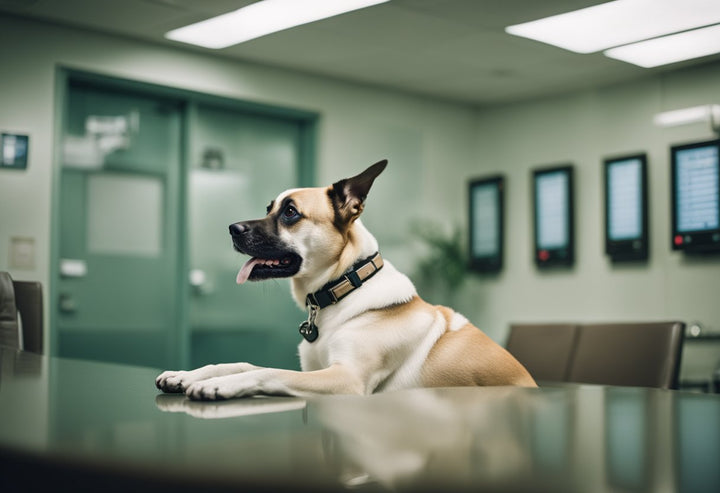
Recognizing signs of anxiety in dogs is crucial for understanding your dog's fear of vet visits. Dogs may exhibit various signs of anxiety, such as trembling, pacing, excessive panting, or attempting to hide. These behaviors indicate that your furry friend is feeling stressed and fearful. Common causes of anxiety during vet visits can include past negative experiences, unfamiliar environments, or the presence of other animals. It's essential to empathize with your dog's emotions and address their fears to ensure a smoother veterinary experience. By recognizing these signs and understanding the underlying anxieties, you can take proactive steps to help your dog feel more comfortable and reduce their fear during vet visits.
A. Recognizing signs of anxiety in dogs

Signs of anxiety in dogs can vary from mild to severe. Some common signs to look out for include pacing, trembling, excessive panting or drooling, attempts to escape or hide, excessive barking or whining, and destructive behaviors such as chewing or scratching furniture. Dogs may also display physiological symptoms like increased heart rate and dilated pupils. It's important for dog owners to pay attention to these signs and recognize when their pet is feeling anxious during vet visits. By understanding the signs of anxiety, pet owners can take proactive steps to help alleviate their dog's fear and provide a more positive experience at the vet clinic.
B. Common causes of anxiety and fear during vet visits
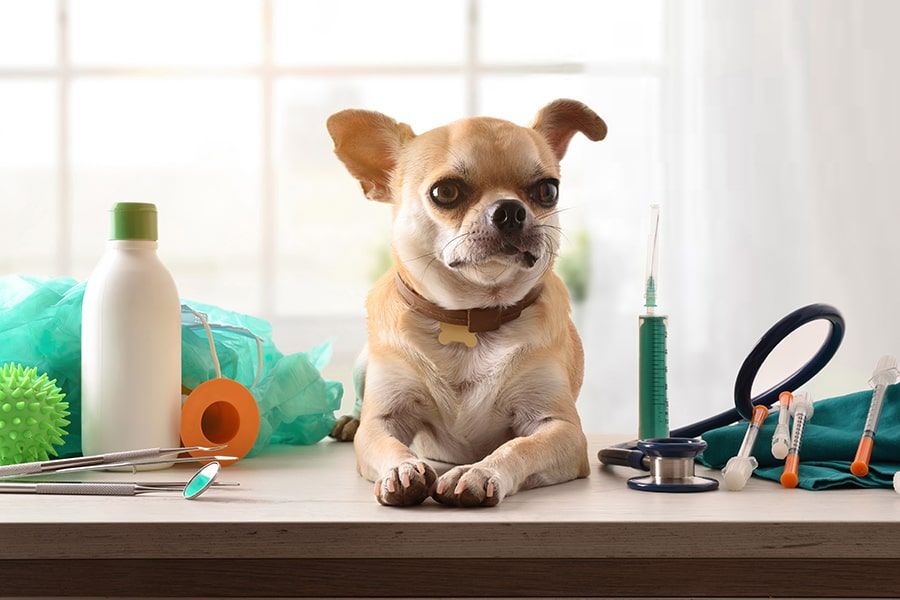
During vet visits, dogs may experience anxiety and fear due to various reasons. One common cause is unfamiliarity with the veterinary clinic environment. The unfamiliar smells, sounds, and presence of other animals can be overwhelming for dogs. Another factor is previous negative experiences, such as painful procedures or rough handling. Dogs may also feel anxious due to the anticipation of discomfort or pain during examinations or vaccinations. Additionally, separation from their owners can contribute to their anxiety. Understanding these common causes can help owners address and mitigate their dog's fear and anxiety during vet visits.
Preparing Your Dog at Home Before the Vet Visit
To ensure a smooth and stress-free visit to the vet, it is important to prepare your dog at home beforehand. One way to do this is by creating a positive association with the carrier or car. Gradually introduce your dog to the carrier or car by leaving it open in a familiar and comfortable area of your home. Encourage your dog to explore and reward them with treats and praise. This will help them feel more at ease when it's time for the vet visit. Additionally, basic training for vet examination procedures can be helpful. Train your dog to sit and stay on command, as this will make it easier for the vet to perform necessary examinations without causing too much stress or anxiety for your furry friend.
A. Creating a positive association with the carrier or car
When it comes to preparing your dog for vet visits, creating a positive association with the carrier or car is crucial. Start by introducing the carrier or car as a positive and safe space for your dog. Leave it open and accessible in your home with treats and toys inside to encourage your dog to explore and associate it with positive experiences. Gradually, close the door of the carrier or take short car rides to build familiarity and comfort. Reward your dog with treats or praise during these experiences to reinforce the positive association. By creating a positive connection with the carrier or car, you can help reduce your dog's anxiety and fear during transportation to the vet clinic.
B. Basic training for vet examination procedures
B. Basic training for vet examination procedures:
When preparing your dog for vet visits, it's essential to familiarize them with basic examination procedures. Start by gently handling your dog's paws, ears, and mouth at home. Gradually introduce them to the feeling of pressure and touch, simulating what they may experience during an actual examination. Use positive reinforcement techniques, such as treats or praise, to reward your dog for staying calm and cooperative.
Additionally, practicing relaxation exercises and desensitization can help reduce anxiety during vet examinations. This involves gradually exposing your dog to similar sensations and environments they may encounter at the clinic. With patience and consistency, basic training can help your dog feel more comfortable during vet visits and minimize anxiety-inducing situations.
Choosing the Right Veterinary Clinic and Staff

When choosing a veterinary clinic for your dog, it's important to find one that specializes in fear-free approaches. Look for clinics that prioritize the emotional well-being of their animal patients and utilize techniques to reduce anxiety and fear. Research different clinics and read reviews from other pet owners to get an idea of their approach. Additionally, building a trusting relationship with the veterinarian and staff is crucial. Ensure that they take the time to listen to your concerns and understand your dog's specific needs. By choosing the right veterinary clinic and staff, you can help alleviate your dog's anxiety and make vet visits a more positive experience.
A. Finding a vet clinic that specializes in fear-free approaches

When searching for a vet clinic that specializes in fear-free approaches, there are a few key factors to consider. Start by asking for recommendations from friends, family, or fellow pet owners who have had positive experiences with their own anxious dogs. Additionally, do some online research and read reviews of local vet clinics to get an idea of their approach to handling anxious pets. Look for clinics that prioritize creating a calm and supportive environment, offer gentle handling techniques, and use positive reinforcement during examinations and procedures. Visiting the clinic before scheduling an appointment can also help you gauge if it is the right fit for your dog's needs.
B. Building a trusting relationship with the vet and staff
Building a trusting relationship with the vet and staff is crucial in reducing your dog's anxiety and fear during vet visits. To establish this trust, it is important to choose a veterinary clinic that emphasizes compassionate and fear-free approaches. When visiting the clinic, take the time to introduce your dog to the vet and staff in a calm and positive manner. Let them interact with your dog at their own pace, offering treats or praise as appropriate. Encourage open communication with the vet and staff about your dog's anxiety, as they can provide additional support and tailor their approach to make your dog feel more comfortable. By building this trust, you can ensure a more positive veterinary experience for your furry friend.
Calming Techniques for Vet Visits

Calming Techniques for Vet Visits:
When it comes to reducing anxiety and fear during vet visits, there are various calming techniques that can be helpful for your dog. One option is to use calming aids and supplements specifically designed for dogs. These can include natural remedies such as pheromone sprays or synthetic dog-calming products.
Additionally, relaxation exercises and desensitization techniques can help your dog become more comfortable with vet procedures. This involves gradually exposing them to the sights, sounds, and smells of a veterinary clinic in a controlled and positive manner.
By incorporating these calming techniques into your dog's vet visits, you can help alleviate their anxiety and make the experience more pleasant for both of you.
A. Using calming aids and supplements

Using calming aids and supplements can be a helpful way to reduce your dog's anxiety and fear during vet visits. There are various options available that can promote relaxation and calmness in your pet.
One commonly used aid is a calming pheromone spray or diffuser. These products release synthetic pheromones that mimic the natural ones produced by lactating dogs, which helps to create a sense of comfort and security for your dog.
Another option is the use of natural calming supplements, such as chamomile or lavender. These herbs have soothing properties and can help to relax your dog's nervous system. It's important to consult with your veterinarian before giving any supplements to ensure they are safe for your dog.
Additionally, there are anxiety wraps or vests that provide gentle pressure to help alleviate stress. These wraps work by applying constant pressure around your dog's torso, which can have a calming effect similar to swaddling an infant.
Remember, while calming aids and supplements can be beneficial, it's important to combine them with other strategies like desensitization and positive reinforcement training for best results.
B. Techniques for relaxation exercises and desensitization

Relaxation exercises and desensitization techniques can be incredibly helpful in reducing anxiety and fear during vet visits for your dog. One technique is progressive muscle relaxation, which involves gently alternating between tensing and relaxing different muscle groups to promote calmness. Deep breathing exercises can also help your dog relax by slowing down their heart rate and instilling a sense of calm. Desensitization involves gradually exposing your dog to the sights, sounds, and smells of the vet clinic in a controlled and positive way. This can be done through regular visits to the clinic where your dog experiences minimal stress or fear, gradually increasing their comfort level over time.
Reducing Stress during Transportation
Reducing Stress during Transportation:
To minimize your dog's anxiety during transportation to the veterinary clinic, there are a few techniques you can employ. Firstly, make the car ride as comfortable and stress-free as possible. Ensure that your dog has a well-ventilated carrier or secure seatbelt harness to keep them safe and secure during the journey. Play soothing music or use comforting scents in the car to create a calming environment. Additionally, taking short practice drives to familiarize your dog with being in the car can help reduce their anxiety. By implementing these strategies, you can make the transportation experience more pleasant for your furry friend.
A. Making the car ride more comfortable and stress-free
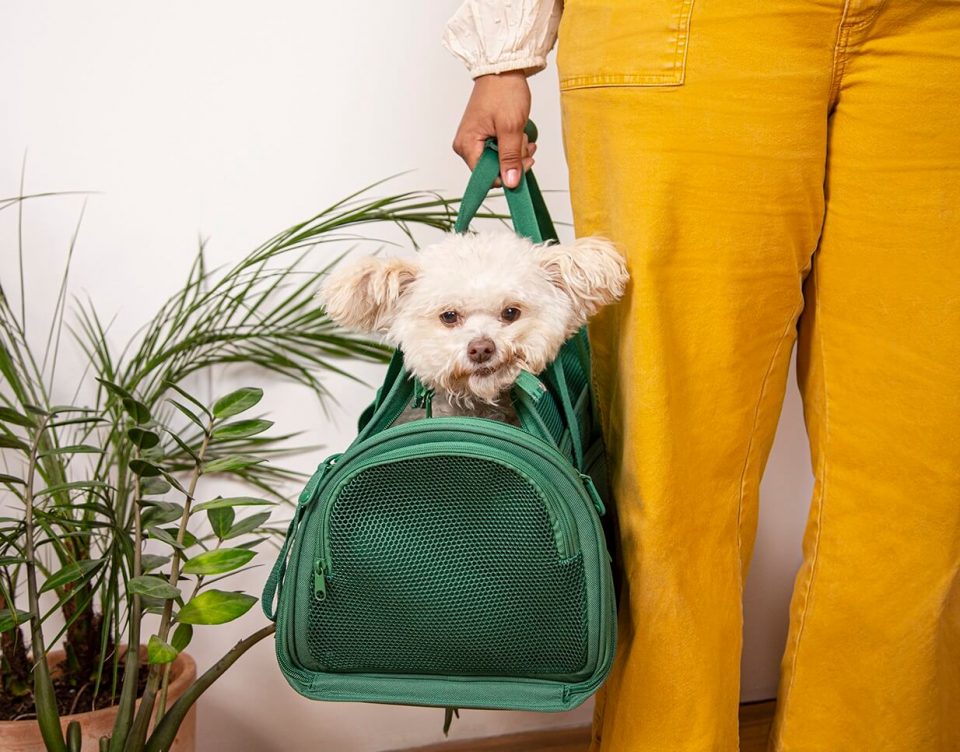
To make the car ride more comfortable and stress-free for your dog during vet visits, there are a few things you can do. First, ensure that the car is well-ventilated and at a comfortable temperature. Avoid overstimulating your dog by keeping windows closed and minimizing noise levels. Use a secure and comfortable crate or carrier to provide a sense of security for your dog during the journey. If your dog experiences motion sickness, consult with your veterinarian about potential remedies or medications. Additionally, consider using products like pheromone sprays or calming aids designed specifically for travel to help reduce anxiety during the car ride.
B. Tips for safely securing your dog in the car
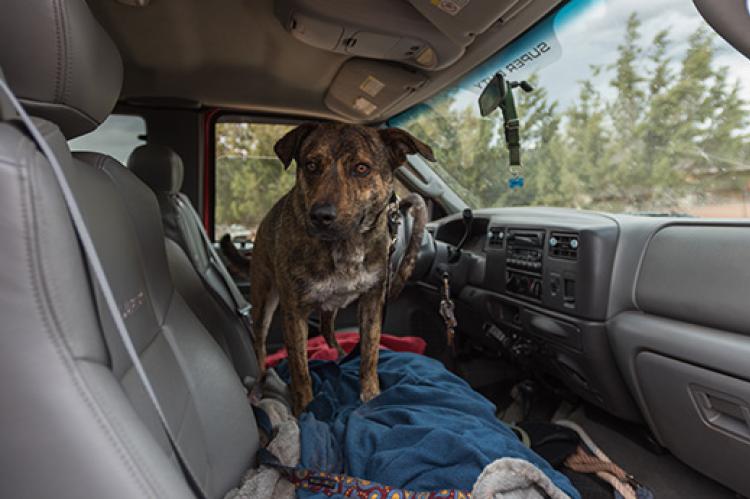
B. Tips for safely securing your dog in the car:
- Use a crate or carrier: Place your dog in a secure crate or carrier that is fastened to the car using seat belts or additional straps to prevent it from moving around during the journey.
- Seat belt harness: Alternatively, use a seat belt harness designed specifically for dogs. This will keep them safely restrained while allowing some freedom of movement.
- Backseat safety: Always secure your dog in the backseat rather than the front, as airbags can be dangerous for them in case of an accident.
- Avoid loose objects: Remove any loose items from the car that could become projectiles during sudden stops or accidents.
- Take breaks: During long journeys, make regular stops to allow your dog to stretch their legs and relieve themselves.
By following these tips, you can ensure your dog's safety and reduce their anxiety during car rides to the vet.
Handling Fear and Anxiety at the Veterinary Clinic

Handling Fear and Anxiety at the Veterinary Clinic
When it comes to handling fear and anxiety at the veterinary clinic, there are a few strategies that can help your dog feel more secure. Firstly, you can help your dog by creating a calm and positive environment in the waiting room. This can be achieved by keeping distance from other animals if your dog is uncomfortable around them. Additionally, try distracting your dog with treats or toys to help alleviate anxiety.
It's also important to communicate openly with the vet and staff about your dog's anxiety. They may be able to make accommodations or adjust their approach to keep your dog feeling as comfortable as possible during the visit.
By addressing fear and anxiety head-on and working closely with your vet, you can help create a more positive experience for both you and your furry friend at the veterinary clinic.
A. Helping your dog feel secure in the waiting room

To help your dog feel secure in the waiting room, there are a few strategies you can use. First, choose a spot away from other animals to minimize their stress. Keep them on a leash or in a carrier to prevent potential confrontations. Bring their favorite blanket or toy to provide comfort and familiarity. Distract them with treats or engage in calming exercises like deep breathing or gentle massage. Maintain a calm and confident demeanor yourself, as dogs can pick up on your emotions. By implementing these techniques, you can help reduce your dog's anxiety and make the waiting room experience more pleasant for both of you.
B. Communicating with the vet and staff about your dog's anxiety
To ensure that your dog's anxiety and fear are addressed during vet visits, it is important to communicate with the vet and staff about your dog's specific needs. Be open and honest about your pet's anxiety, providing any relevant information that might help them understand your dog better. You can share details about previous negative experiences, triggers, or specific fears your dog may have. By having a clear line of communication with the vet and staff, they can tailor their approach to help ease your dog's anxiety and make the experience as stress-free as possible. Remember, they are there to support you and your furry friend through the process.
Positive Reinforcement Training for Vet Visits
Positive reinforcement training is a valuable tool for preparing your dog for vet visits and reducing their anxiety and fear. This method focuses on rewarding desired behaviors to encourage your dog to associate vet visits with positive experiences.
During the visit, reward your dog with treats, praise, and affection for remaining calm and cooperative. Start gradually by practicing basic obedience commands in a low-stress environment, then gradually introduce more vet-like scenarios, such as handling their paws or examining their ears.
Consider enlisting the help of a professional dog trainer or behaviorist who specializes in positive reinforcement techniques. With consistency and patience, positive reinforcement training can help create a more positive association with vet visits for your furry friend.
A. Using rewards and positive reinforcement during vet visits
Using rewards and positive reinforcement during vet visits can greatly reduce your dog's anxiety and fear. Positive reinforcement involves rewarding your dog for good behavior, which helps to create a positive association with the veterinary clinic.
One effective method is to bring along your dog's favorite treats or toys and reward them during the visit. For example, you can give your dog treats when they enter the waiting room calmly or when they allow the vet to examine them without resistance. This will help them see the vet as a source of positive experiences.
Additionally, praise and give plenty of affection to your dog throughout the visit. Show them that they're doing a great job and that you're proud of their behavior. This will reinforce their confidence and help to alleviate their anxiety.
By using rewards and positive reinforcement, you can transform vet visits into a more pleasant experience for your furry friend and make future visits less stressful for them.
B. Enlisting the help of a professional dog trainer or behaviorist
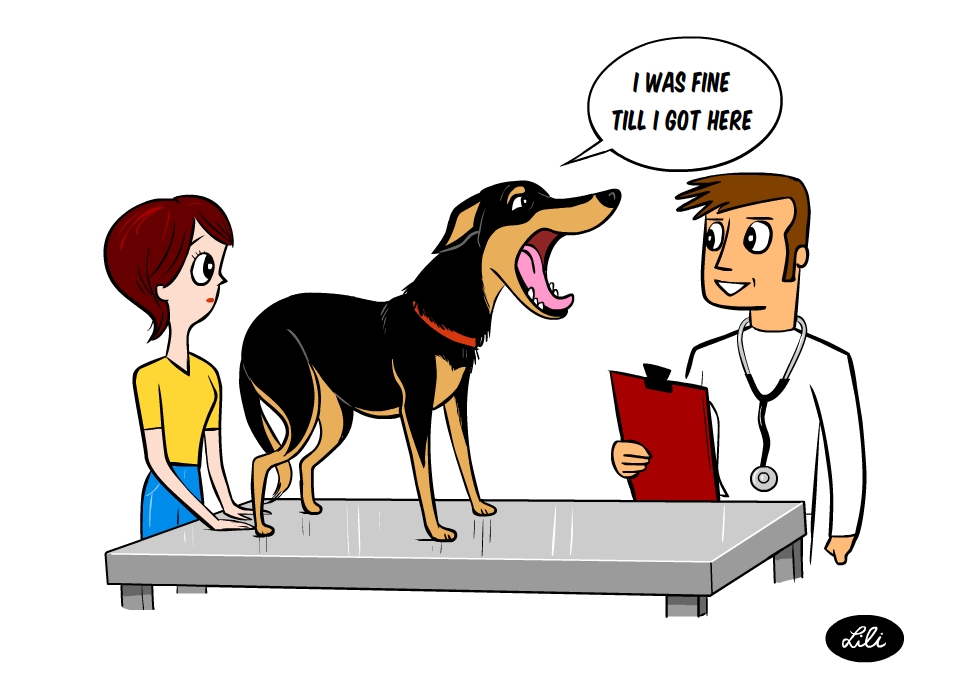
Enlisting the help of a professional dog trainer or behaviorist can be extremely beneficial when it comes to preparing your dog for vet visits and reducing their anxiety and fear. These experts have the knowledge and experience necessary to address your dog's specific needs and provide effective training techniques.
A professional dog trainer or behaviorist can work with you and your dog to develop a customized training plan that focuses on desensitizing your pet to the various sights, sounds, and experiences they may encounter during a vet visit. They can teach you useful techniques for handling your dog during examinations, vaccinations, or other procedures in a calm and reassuring manner.
By working with a professional, you can gain the tools and knowledge needed to help your dog feel more comfortable and confident during vet visits. Their guidance and support can greatly reduce your dog's anxiety and fear, leading to a much smoother experience at the veterinary clinic.
Managing Fear and Anxiety during the Exam and Procedures

During the examination and procedures at the veterinary clinic, it's important to manage your dog's fear and anxiety to ensure a positive experience. Gentle handling techniques can help soothe your dog and build trust. Approaching your dog calmly, speaking softly, and avoiding sudden movements can help ease their anxiety. Additionally, distractions such as treats or toys can redirect their focus during more uncomfortable procedures. It's crucial to work together with the vet and staff to minimize stress and fear for your furry friend. By using these techniques, you can make the exam and procedures less daunting for your dog.
A. Gentle handling techniques during examination

During the examination, it is crucial for the veterinary staff to use gentle handling techniques to minimize your dog's anxiety and fear. They should approach your dog calmly and avoid sudden movements or gestures that may startle them. The vet may also use techniques such as soft strokes or gentle pressure to help keep your dog calm during the examination. It is important for them to communicate with you throughout the process so that you can provide any necessary support or reassurance to your dog. By employing these gentle handling techniques, the veterinary staff can help your dog feel more at ease during the examination.
B. Reducing fear and anxiety during vaccinations and blood draws

During vet visits, vaccinations and blood draws can be particularly stressful for dogs. To reduce fear and anxiety during these procedures, there are a few techniques you can try. First, it's important to create a calm environment by speaking soothingly to your dog and providing treats or rewards. Distraction techniques such as offering a favorite toy or engaging in gentle petting can also help redirect their attention. Additionally, some dogs benefit from the use of a gentle muzzle or the assistance of a veterinary technician to hold them comfortably during the procedure. It's important to work closely with your vet to find the best approach for your dog's specific needs.
Conclusion
In conclusion, reducing anxiety and fear during vet visits is crucial for the well-being of your dog. By understanding the signs of anxiety and addressing the common causes, you can take proactive steps to prepare your dog at home before the visit. Choosing a veterinary clinic that specializes in fear-free approaches and building a trusting relationship with the staff is also important. Calming techniques, managing stress during transportation, and positive reinforcement training all play a vital role in creating a more relaxed experience for your dog. By implementing these strategies and maintaining ongoing training and desensitization, you can help your dog feel more comfortable during vet visits in the long run.
A. Recap of tips for reducing anxiety and fear during vet visits

During a vet visit, it's crucial to reduce your dog's anxiety and fear. Here are some key tips:
- Recognize signs of anxiety, such as shaking or panting.
- Create a positive association with the carrier or car by offering treats and praise.
- Train your dog in basic examination procedures, like gently touching their paws or looking in their ears.
- Find a vet clinic that specializes in fear-free approaches to help ease your dog's stress.
- Build a trusting relationship with the vet and staff through regular visits and positive interactions.
- Utilize calming aids and supplements to help relax your dog before the visit.
- Practice relaxation exercises and desensitization techniques at home to prepare them for vet procedures.
Remember, ongoing training and desensitization are essential for long-term success in reducing anxiety during vet visits.
B. Importance of ongoing training and desensitization for long-term success
Ongoing training and desensitization play a crucial role in ensuring the long-term success of reducing anxiety and fear during vet visits for your dog. By continuously working with your dog and exposing them to different elements of the vet visit, you can help them become more comfortable and calm over time. Consistent training reinforces positive behaviors and helps your dog build confidence in handling stressful situations. Desensitization involves gradually exposing your dog to the various triggers associated with vet visits, allowing them to acclimate slowly while feeling safe and secure. Both training and desensitization are essential components in helping your dog overcome their fear and anxiety, leading to a more positive veterinary experience for everyone involved.




0 Comments